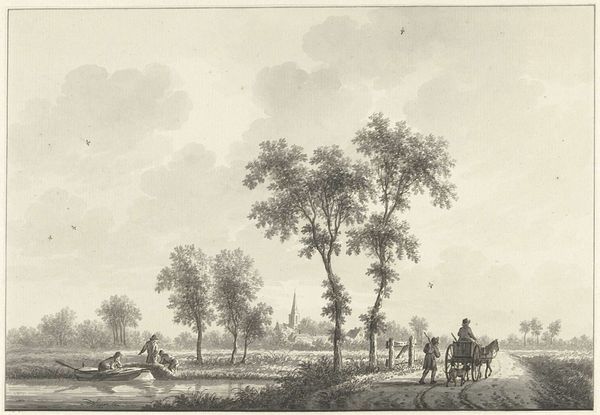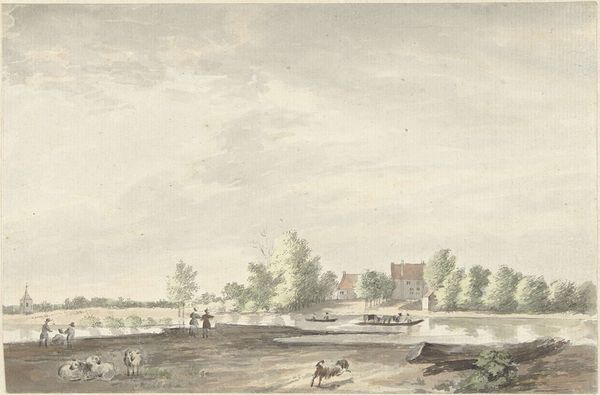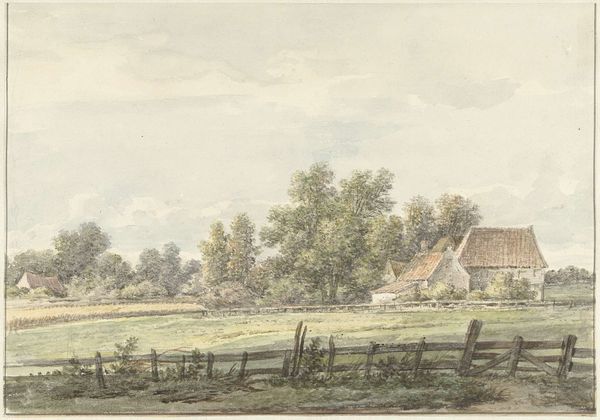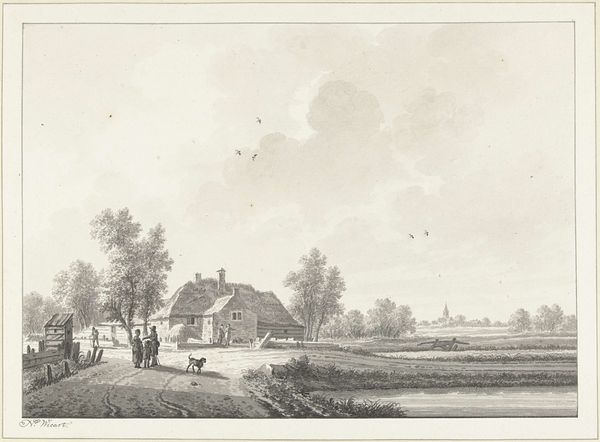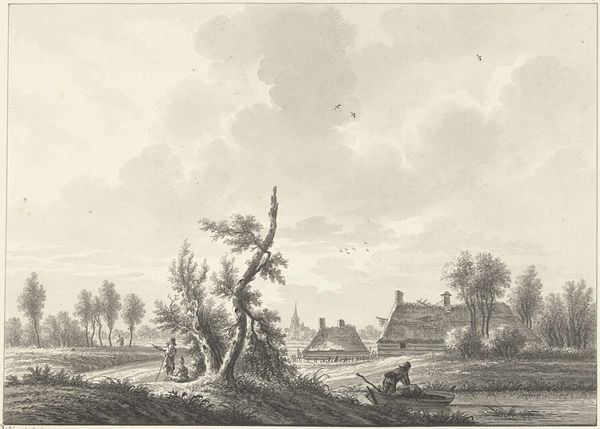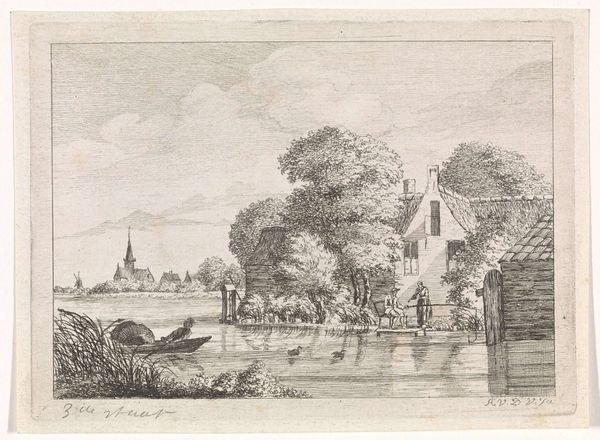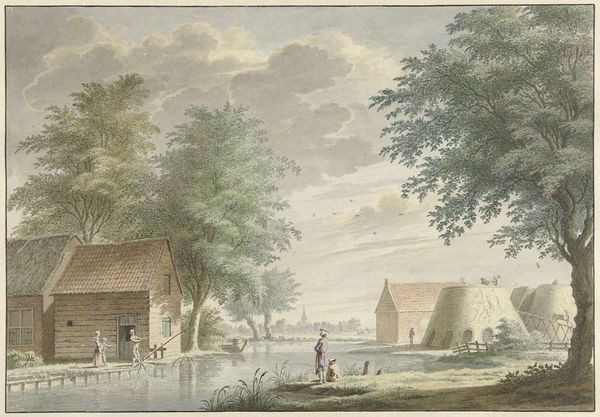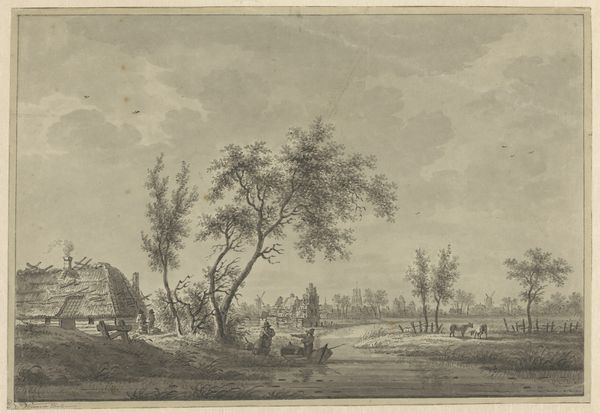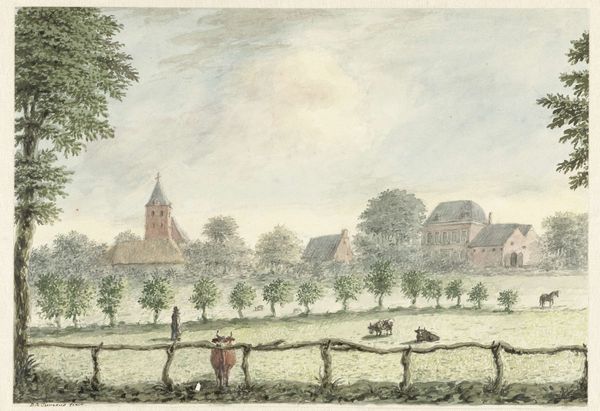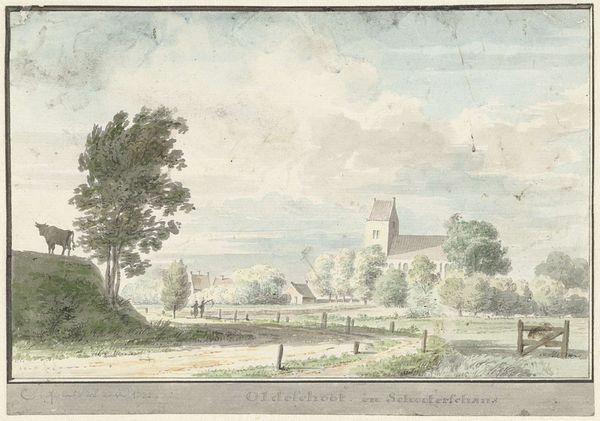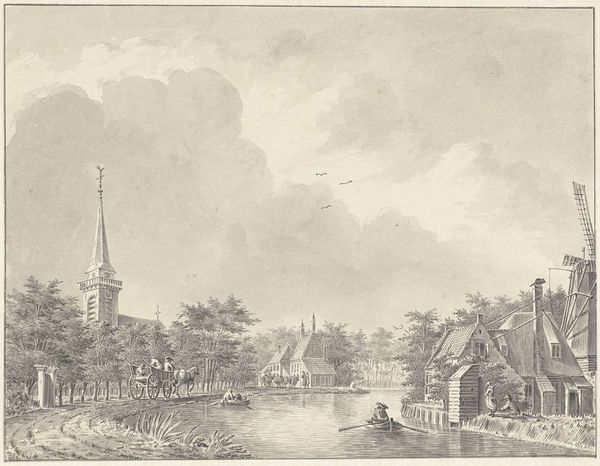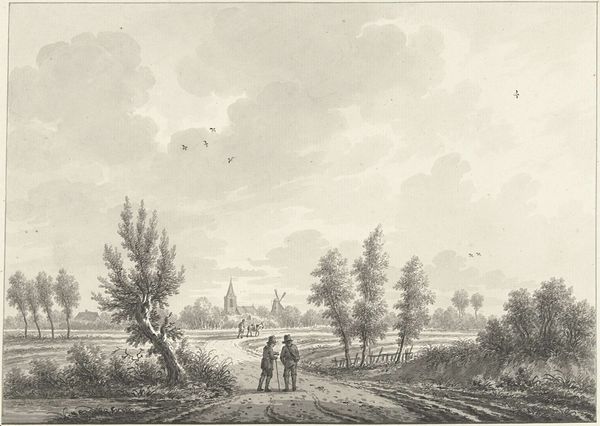
painting, watercolor
#
neoclacissism
#
painting
#
landscape
#
watercolor
#
genre-painting
Dimensions: height 280 mm, width 408 mm, height 228 mm, width 327 mm
Copyright: Rijks Museum: Open Domain
Curator: This is "A Landscape with a Church on the Horizon," a watercolor landscape by Nicolaas Wicart, dating from sometime between 1758 and 1815. Editor: It's a bit faded, isn't it? A very muted palette. Sort of washed out but there's something compelling about the way it centers the figures with these soft blurry lines and pigments in contrast with the precise architecture. I am curious, what type of pigment was available at the time and how it has aged to reach what we are seeing now? Curator: That subdued palette certainly lends it a sense of melancholy. The church is centrally placed; these symbols of community and permanence are standard during periods of intense social and political change and they usually point to some collective feeling for that permanence and order in the changing world. Editor: What does its process tell us about access? The texture and blending suggest a very calculated, painstaking process—materials accessible for someone privileged or wealthy but very costly, a limited edition almost like couture compared to mass-produced factory items, and it brings me back to think about this context and consumption during its moment in history. Curator: It is worth noting the artist, Wicart, worked in the tradition of neoclassicism at this time and, it is also labeled as genre painting so this might be showing everyday lives for this location with very controlled brushwork in an idealistic yet slightly bland approach compared to rococo art. I think, its power as a representation lies in that collective, somewhat sentimental desire for an imagined time of simplicity. The church becomes a beacon of continuity and belonging. Editor: But who is doing the belonging and labor for that place? Thinking again about the artist’s access, if he has no labor limitations compared to a common worker at that period or now. Curator: That's an important point. The image is very sanitized and only tells one facet. Editor: Indeed, this work prompts reflections on the production and context of the scene while it's been made—and how its value might shift now. Thank you! Curator: Absolutely. It is interesting to reconsider an apparently simple, soothing scene with a little more cultural, material insight.
Comments
No comments
Be the first to comment and join the conversation on the ultimate creative platform.
